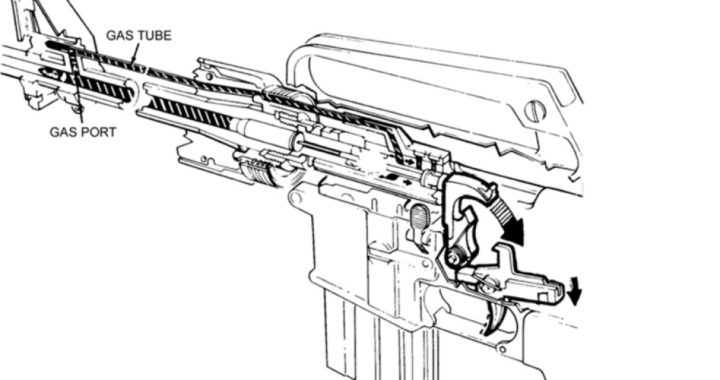
The Obama administration is proposing regulations that could “censor online speech related to firearms” and subject violators to “severe” penalties, the National Rifle Association (NRA) warns. The new rule, says the NRA, “is as much an affront to the First Amendment as it is to the Second.”
The proposed regulations, published in the June 3 issue of the Federal Register, are part of a “large scale overhaul of the International Traffic in Arms Regulations (ITAR)” that the administration has been pursuing “for the past several years,” writes the NRA. The ITAR, which implement the Arms Export Control Act (AECA) of 1976, require anyone wishing to export certain “defense articles,” which include firearms and ammunition, and “defense services” to obtain a license from the State Department before doing so. They also demand that producers of such articles and services “register with the U.S. Government and pay a hefty fee for doing so,” according to the NRA.
In addition, writes the gun group, exporting “technical data” about defenseitems, such as “blueprints, drawings, photographs, plans, instructions or documentation,” is subject to ITAR — and that is where the real danger lies.
ITAR were, of course, originally written when home computers were still a novelty and the Internet wasn’t even a gleam in Al Gore’s eye. They do not regulate technical data in the “public domain” — data “which is published and which is generally accessible or available to the public,” including at public libraries. “Many have read this provision to include material that is posted on publicly available websites, since most public libraries these days make Internet access available to their patrons,” the NRA explains.
However, notes the organization, “Some State Department officials now insist that anything published online in a generally-accessible location has essentially been ‘exported,’ as it would be accessible to foreign nationals both in the U.S. and overseas.”
The proposed regulations bear out this contention. “A release of ‘technical data’ may occur by disseminating ‘technical data’ at a public conference or trade show, publishing ‘technical data’ in a book or journal article, or posting ‘technical data’ to the Internet,” reads the rule. (Emphasis added.) “Persons who intend to discuss ‘technical data’ at a conference or trade show, or to publish it, must ensure that they obtain the appropriate authorization.”
Although the State Department claims it is merely “clarifying” the rules about disseminating “technical data,” the NRA argues that “the proposal would institute a massive new prior restraint on free speech,” subjecting “online blogs, videos, and web forums devoted to the technical aspects of firearms and ammunition … to prior review by State Department bureaucrats before they can be published.” Indeed, suggests the group, the new rules “would make online communications about certain technical aspects of firearms and ammunition essentially impossible.”
“Gunsmiths, manufacturers, reloaders, and do-it-yourselfers could all find themselves muzzled under the rule and unable to distribute or obtain the information they rely on to conduct these activities,” the NRA asserts. How many of them, after all, have the resources either to obtain approval to publish their data or to stand up to the federal government for violating the rules? The penalty for each violation includes up to 20 years in prison and a fine of up to $1 million, with the dissemination of such information to each individual foreign country or national considered a separate violation — and there could be civil penalties to boot. Better not to post such information than to risk the wrath of Uncle Sam, many will quite reasonably conclude.
Lest anyone think this is just alarmist rhetoric from the “gun lobby,” recall that the administration has already used ITAR to force Defense Distributed founder Cody Wilson, creator of the first 3D-printed handgun, to remove the blueprints for the gun from his website, where he offered them for free to all interested parties. This hasn’t done anything to stop the spread of Wilson’s blueprints, which had already been downloaded over 100,000 times by the time he received and complied with the order from the State Department, or the advance of 3D firearms printing in general; but it has shown that the administration is eager to crack down on people who don’t play by its (unconstitutional) rules. Backed by the Second Amendment Foundation, Wilson is now suing the administration with a legal team headed by Alan Gura, who successfully argued two recent gun-rights cases, District of Columbia v. Heller (2008) and McDonald v. Chicago (2010), before the Supreme Court.
The proposed regulations are open for public comment until August 3; those concerned about firearms and free-speech rights may wish to make their voices heard in the interim. Whether the Obama administration will listen, however, is another matter entirely. Considering the fact that it applied ITAR to Wilson’s blueprints two years ago, well before these latest regulations were proposed, it may not really care what the rules — whether codified in regulations or laws or the Constitution — say. As the NRA observes, “When did the U.S. Constitution ever deter Barack Obama from using whatever means are at his disposal to exert his will over the American people and suppress firearm ownership throughout the nation?”



